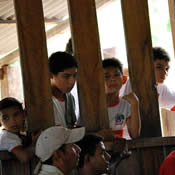Scenario Planning

About the Scenario Methodology
Scenario planning is an alternative tool to forecasting in times and situations where uncertainties are overwhelming. They are alternative, plausible stories of how the wider environment may develop in the future. While forecasting may be very useful when one can rely on the observation of the past (which happens only when the environment is changing slowly and linearly), scenarios are not predictions of what will happen. They are credible, robust, relevant and challenging possible stories that enable to explore hypothesis (what if?). The purpose of scenarios is not to pinpoint future events, but to highlight large-scale forces that push the future in different directions.
A set of scenarios provides a learning environment (a framework), in which policy and decision makers can explore these forces, better understand the dynamics shaping the future and thus, assess strategic options and prepare to take strategic decisions. They provide –actually create- a common language and basis for communicating complex and sometimes paradoxical options and conditions; but moreover they have the power to break old stereotypes because their creators can assume ownership.
For this process SCENAM is using the Shell scenario approach.
About the SCENAM Process
The SCENAM set of scenarios will provide a learning environment (a framework), in which regional policy and decision-makers will be able to explore the forces underpinning change and understand the basin dynamics that will shape the future of the Amazon region. It will thus help assess the strategic options for common water resources management and prepare to take strategic decisions.
SCENAM aims at the perceptions of stakeholders, actors and decision-makers of the Basin by transforming information into fresh perceptions, thus changing basin and “non-basin” mental maps of the region. They will brighten the perception of the various Amazon Basin systems by making an imaginative leap into the future in order to help finding common ground for the current decision processs.
The SCENAM Process Table shows the various chronological and methodological steps that the project will follow to deliver the scenario stories and reach the Vision stage.
The SCENAM Pyramid shows how the scenario methodology, while following the chronological steps of the process table, will simultaneously works as a bottom-up, iterative process allowing for all interests to be taken into account.
About The Amazon
Despite being the world’s greatest patrimony of biodiversity and sweet water resources with a wealth of natural riches of all kinds, the Amazon Basin is populated by communities whose living conditions remain below those of communities elsewhere in the sheltering countries. This places growing political pressure on national governments not only to deal with the economic and societal complexity of the Basin but also with the environmental challenges of the region. It is the environmental issue that has captured worldwide attention and contributed to external (global) pressures on the national governments to preserve the Amazon Basin. This, in turn, has exacerbated socio-economic tensions within the Basin, where the Amazonian society is legitimately seeking to utilize the natural resource base for economic purposes.
After two decades of the World Commission on Environment and Development (WCED) report calling for the development of long term environmental strategies, greater cooperation between countries, and the definition of long term shared perceptions of environmental issues, it is still linear thinking that has dominated mental models used for critical decision making in most institutional governance structures - multilateral ones in particular. The Amazon Paradox tries to explain why the lack of applied systems thinking tools - like scenario planning - within these institutions has prevented the necessary restructuring that would allow them in turn to invest in the development of the longer term visions and strategies that the WCED had so urgently called for.